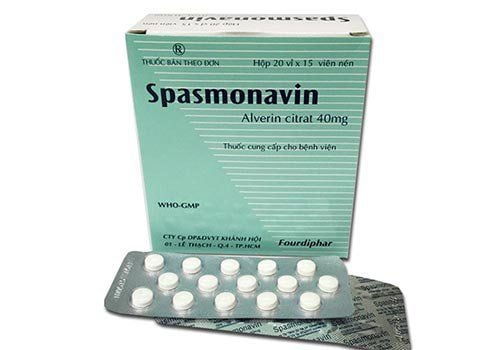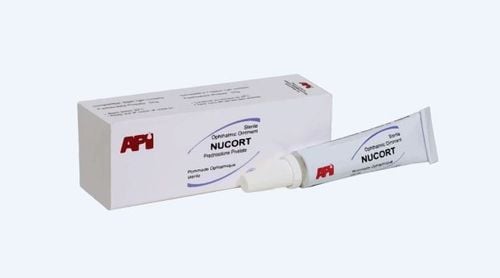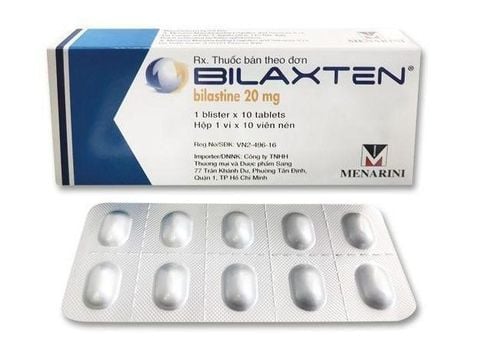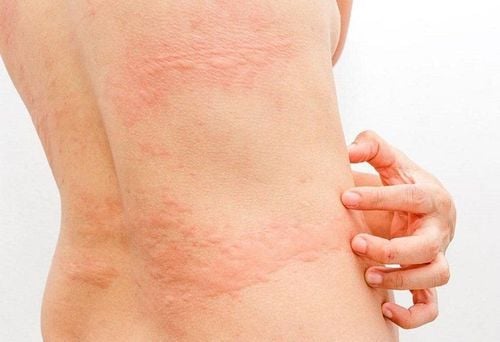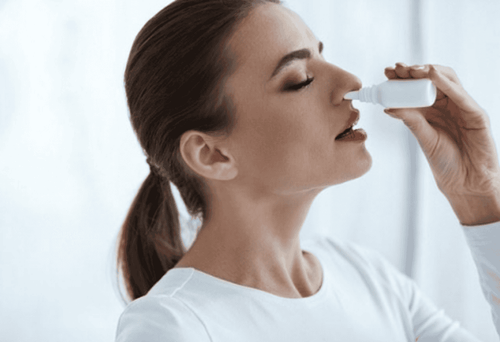This is an automatically translated article.
Cetalecmin is prescribed by doctors mainly to treat cases of allergies or hypersensitivity, such as skin allergies, eye or eye inflammation disorders,... To ensure safety and soon cure When recovering from illness, you need to be cautious and strictly follow the treatment regimen with Cetalecmin recommended by your doctor.
1. What is Cetalecmin?
Cetalecmin is an anti-allergic drug, often used in cases where patients experience hypersensitivity reactions. Cetalecmin is researched, developed and manufactured by Minh Hai Pharmaceutical Joint Stock Company - Vietnam in the form of tablets, each box includes 2 blisters x 15 tablets or 3 blisters x 10 tablets.In each Cetalecmin tablet contains 2 main active ingredients, including Betamethasone (0.25mg) and Dexchlorpheniramine maleate (2mg). In addition, the drug formula also has the presence of a number of other auxiliary excipients.
2. What are the effects of Cetalecmin?
Cetalecmin antiallergic drug with a combination of 2 active ingredients Betamethasone and Dexchlorpheniramine maleate to help bring about effective treatment of allergic or hypersensitivity cases, specifically:
Betamethasone: Acts as a synthetic Corticosteroid , has strong glucocorticoid capacity. This active ingredient is known for its effective anti-inflammatory, anti-allergic and anti-rheumatic effects. Currently, Betamethasone is often used in cases of adverse pathology in terms of water retention. When used in high doses, Betamethasone has a suppressive effect on the immune system. Some diseases can be treated with Betamethasone such as endocrine diseases, skin disorders, collagen disorders, musculoskeletal diseases, seasonal allergic rhinitis,... Dexchlorpheniramine maleate: When used in normal doses, active This substance has a sedative effect thanks to its ability to inhibit histamine and inhibit adrenaline in the central nervous system. The general property of Dexchlorpheniramine is antagonistic, having effects mainly on blood vessels, skin, nasal mucosa, conjunctiva, intestines or bronchi. The antihistamine itself has a mild cough suppressant effect. In general, Dexchlorpheniramine is commonly used to treat seasonal/year-round allergic rhinitis or urticaria.
3. Indications and contraindications for the use of Cetalecmin
Currently, the drug Cetalecmin is prescribed by doctors to treat the following medical conditions:
Effective treatment of complicated cases in the respiratory tract, inflammatory eye disorders, eye and skin allergies. Treatment of conditions requiring the use of additional systemic corticosteroid therapy. However, the use of Cetalecmin should be avoided in the following patients without an indication:
Patients with hypersensitivity or allergic reaction to Betamethasone, Dexchlorpheniramine or any of the excipients contained in the drug. Contraindicated to use Cetalecmin for children under 6 years old, premature babies or infants. Cetalecmin should not be used in patients being treated with an MAO inhibitor. Avoid using Cetalecmin for people with systemic fungal infections, narrow-angle glaucoma, peptic ulcers, bladder neck obstruction or prostate enlargement.
4. How should Cetalecmin be used appropriately?
Because it is made in the form of tablets, Cetalecmin will be used orally. The patient can take the drug with a sufficient amount of filtered water, avoid crushing the tablet or take it with other drinks such as soft drinks, carbonated water, coffee, alcohol,...
On the other hand, the patient also Cetalecmin should be used according to the dosage recommended by the doctor, specifically:
Children over 12 years old and adults: Use the starting dose from 1 to 2 tablets x 4 times a day, should be taken after meals and before go to sleep. Do not take more than 8 tablets per day. Children from 6 to 12 years old: Take 1/2 tablet x 3 times/day. An additional daily dose can be taken and taken at bedtime. Avoid giving children more than 4 tablets per day. During treatment with Cetalecmin, patients should avoid arbitrarily adjusting the dose or changing the drug regimen without the approval of the doctor.
5. What side effects can Cetalecmin cause?
In addition to the effective treatment of allergic and hypersensitivity cases, Cetalecmin can bring some adverse side effects to patients during use:
Common reactions: Increased elimination potassium, fluid retention, sodium retention, Cushing's syndrome, menstrual irregularities, impaired glucose tolerance, growth retardation in children, latent manifestations of diabetes, pathological fractures , osteoporosis , muscle weakness , muscular atrophy , aseptic necrosis of the femur , spina bifida , dry mouth , sedation or somnolence . Uncommon reactions: Gastrointestinal perforation/bleeding, peptic ulcer, acute pancreatitis, agitation, insomnia, euphoria, cataracts or glaucoma. Rare reactions: Hemorrhage, acne, hirsutism, ecchymosis, dizziness, delayed healing or nausea. Usually, these unwanted side effects go away after the patient stops taking the drug. If other rare symptoms that have not been mentioned, the patient should immediately notify the medical officer in order to take action.
6. Notes and cautions when using Cetalecmin
Here are some important notes based on the doctor's recommendation for most patients to ensure safety during treatment with Cetalecmin:
Be extremely cautious when using Cetalecmin for people who have recently had a myocardial infarction. heart failure, congestive heart failure, diabetes, hypertension, glaucoma, epilepsy, diabetes, liver failure, hypothyroidism, gastrointestinal ulceration, osteoporosis, renal failure or psychosis. Risk of growth retardation if Cetalecmin is given to children. Elderly people may be at increased risk of side effects. Caution should be exercised when administering cetalecmin to patients with suspected or advanced tuberculosis. People with latent TB should be carefully monitored and given anti-tuberculosis chemoprophylaxis during long-term drug use. The use of systemic corticosteroids may increase the risk of severe chickenpox and shingles, so non-immune patients should avoid exposure to these diseases. With long-term use, it is necessary to regularly monitor the patient's health. Consider reducing sodium intake and increasing potassium and calcium supplements. Use caution when using Cetalecmin for patients with urinary retention, narrow-angle glaucoma, pyloric obstruction and prostatic hyperplasia. The sedative effect of the active ingredient Dexchlorpheniramine maleate is increased when the patient is used with alcohol and other sedatives. Cetalecmin can cause dizziness, somnolence and psychomotor impairment in some cases, so patients need to be careful when using the drug while driving or operating machinery. Caution should be exercised when using Cetalecmin in patients over 60 years of age because this subject is often highly susceptible to the anti-acetylcholine side effects of the drug. Consider the potential benefits and risks before administering Cetalecmin to pregnant women, women of childbearing age, unborn babies, nursing mothers, and infants. Check the expiry date of the medicine before use, if it has expired, the medicine should be discarded as prescribed. Do not take medicine that shows signs of mold, discoloration or deformation. Cetalecmin has the potential to interact with other medications, so patients should tell their doctor about all medications they are currently taking, including supplements, vitamins, supplements, nutritional products, or supplements. Herbal. Store Cetalecmin in a dry place, avoid areas with high humidity or direct exposure to strong light from the sun.




